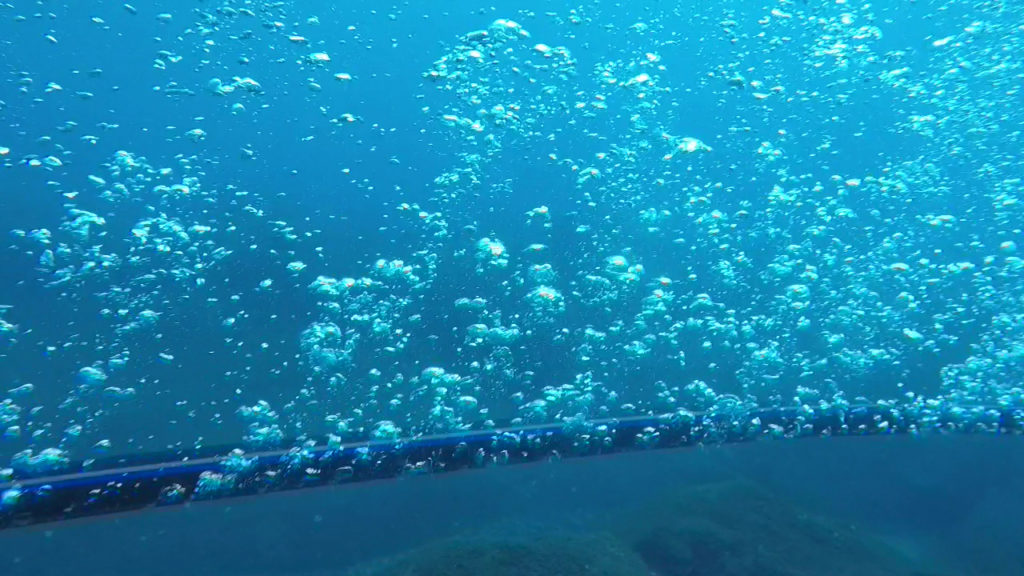The response of common carp (Cyprinus carpio) to insonified bubble curtains
The Journal of the Acoustical Society of America 150, 3874 (2021); https://doi.org/10.1121/10.0006972
Available online 22.11.21
Acoustic bubble curtains have been marketed as relatively low cost and easily maintained behavioural deterrents for fisheries management. Their energy efficiency can be improved by reducing air flow and exploiting bubble resonance. In a series of three flume experiments, we: (1) investigated the reactions of carp to a low air flow bubble curtain, (2) compared the effectiveness of resonant versus non-resonant insonified bubble curtains (for the same volume flux of gas injected through the nozzles) to deter passage, and determined the stimuli responsible for eliciting deterrence, and (3) included the effect of visual cues generated by the bubble curtain. This study showed that bubble curtains with a higher proportion of resonant bubbles deterred carp relatively better. Passage rejection was likely influenced by multiple cues at distances within a body length of the fish— specifically the rate of change in both particle motion and flow velocity caused by rising bubbles. All acoustic bubble curtains were less effective in the presence of daylight, suggesting that vision plays an important role at mediating carp reactions. We discuss the importance of ascertaining the bubble size distribution, in addition to the gas flow rate and aperture size, when characterising acoustically active bubble curtains.
ACKNOWLEDGMENTS
The lead author was funded by an EPSRC Doctoral Training Centre grant (No. 1642690). We thank A. Holgate, Dr. T. Tsuzaki, and K. Scammell for assistance with designing and constructing the bubble generator, and experimental setup; S. Haściłowicz and J. Miles for their coding inputs; Dr. Kyungmin Baik for helpful discussions on the scattering cross sections; and members of the International Centre for Ecohydraulics Research (ICER), the Centre for Doctoral Training in Sustainable Infrastructure Systems (CDT-SIS), and the Institute for Sound and Vibration Research (ISVR) for experimental cover, and various discussions, suggestions, and constructive comments provided throughout. Data supporting this study are openly available from the University of Southampton repository at https://doi.org/10.5258/SOTON/D1782.


